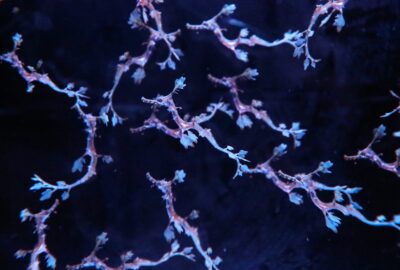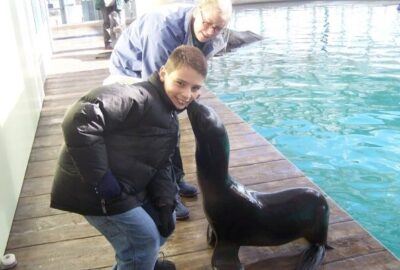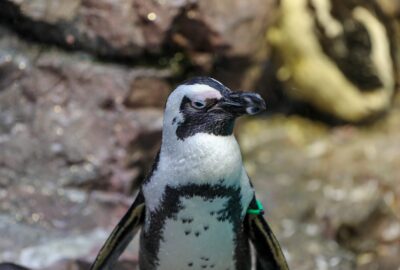We are SOLD OUT of tickets for today, Saturday July 5th.
Meet a Few of the Experts on our Animal Care Team
By New England Aquarium on Tuesday, July 18, 2023

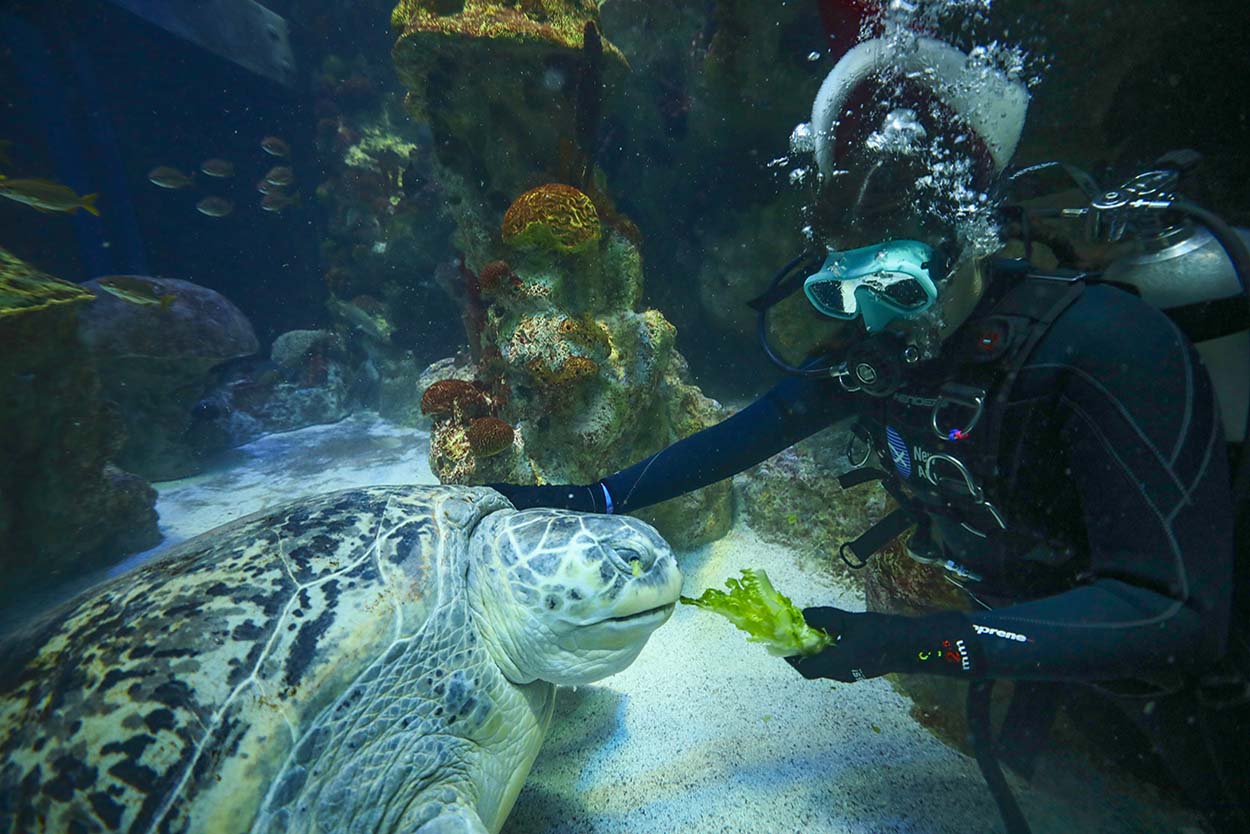
It’s Animal Care Appreciation Week—a time to recognize the hard work, conservation efforts, and passion of people who work in zoos and aquariums! Here, meet just a few of our staff whose dedication and expertise are essential to providing high-quality care to all our animals each day.
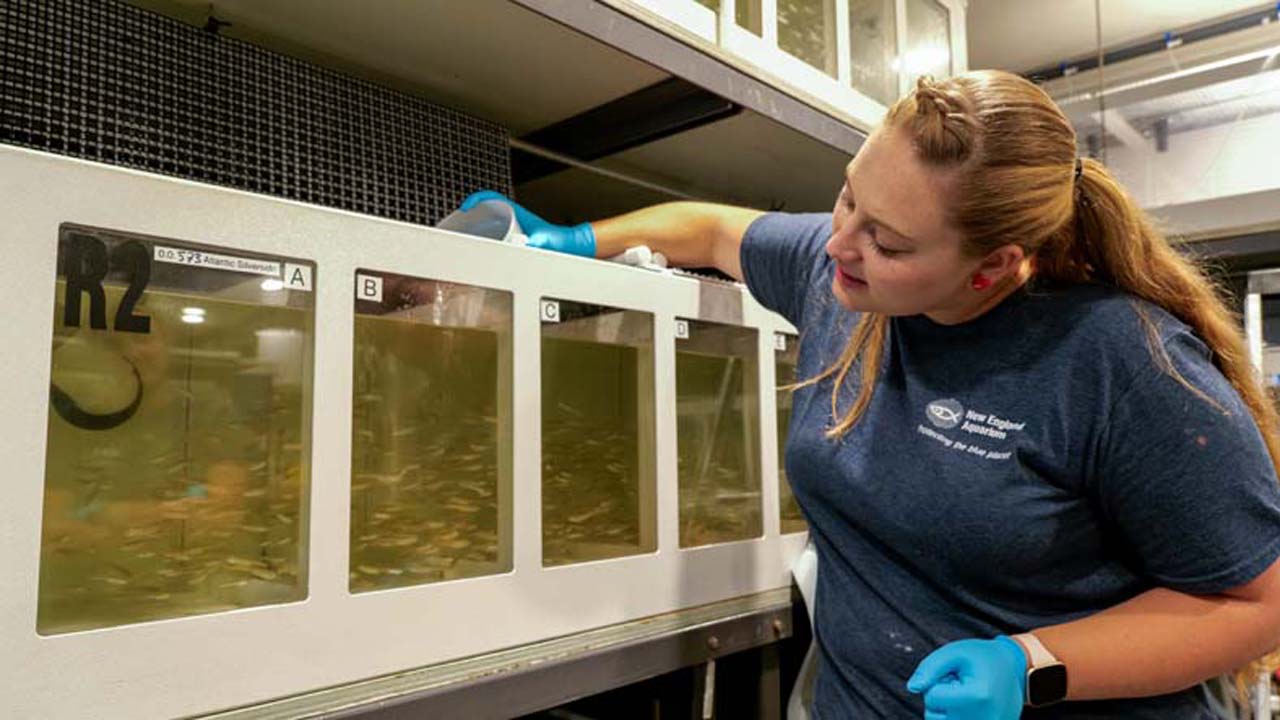
Laura Anderson, Sustainability Aquarist II
What animals do you work with at the Aquarium?
I primarily work with some of our smallest residents: larval fish! I also work a lot with their parents—things like lookdowns, glassy sweepers, silversides, and even seadragons. While Quincy is definitely different than the main building, they share a lot of the same types of animals. If you go to the Blue Planet Action Center, you can often see fish that were born and raised in Quincy by me and my team.
What does a typical day look like in your role?
My day can vary a lot, but a typical one involves feeding animals, doing formal observations called ethograms, and collecting any eggs that were spawned overnight. I also meet with a lot of aquarists from different aquariums to help strategize how we can make our facilities more sustainable! My day also focuses on a lot of data collection, so we can learn what’s working best for our animals, and figure out where we can improve.

Alessia Brugnara, Biologist II
What is your favorite part of working as an animal care professional?
My favorite part about working as an animal care professional is watching the day-to-day effect our work has on the animals we care for. The sea turtles we work with are, for the most part, on death’s door when they arrive at our facility. Seeing the progression from barely taking breaths while you support them in the water column to watching them snatch a squid head from one of their tank mates is incredible. Witnessing the cold stun sea turtles we work with fight off sickness, gain weight, and start behaving like the wild sea turtles they are makes this job very rewarding.
Can you share a favorite memory from your job?
Some of my favorite memories involve days were we are deep in the cold-stun sea turtle intake season, and I wake up from a phone call at 5:00 a.m. letting me know they found 60-plus animals already and we are going to be having a huge intake day. Those days always remind me of the sheer magnitude of critically endangered animals we work to rescue during the cold stun season. These days also make me so grateful for the team and network I am a part of. The amount of communication, preparation, and overall teamwork that goes into intaking the number of animals which we intake on one of these busier days, or even on a normal day, remind me of how lucky I am to be a part of the Rescue team.

Tommy DeMarco, Trainer I
How did you end up in a career in animal care?
It all started with a seal kiss when I was 12 years old through the harbor seal meet and greet program offered here. From that moment onward I looked up to the trainers and knew I wanted to be like them when I grew up. I worked a few different positions out in the animal care field, including a marine mammal trainer and coral researcher, before I fell in love with working with penguins.
Can you share a favorite memory from your job?
There are so many, but I would have to say learning and going through my first breeding season with our penguins has been absolutely amazing. Seeing them grow from just eggs to a a chick, to a juvenile all within three or so months is pretty mind-blowing. It also is so rewarding knowing I am helping the species directly through the AZA Species Survival Plan.
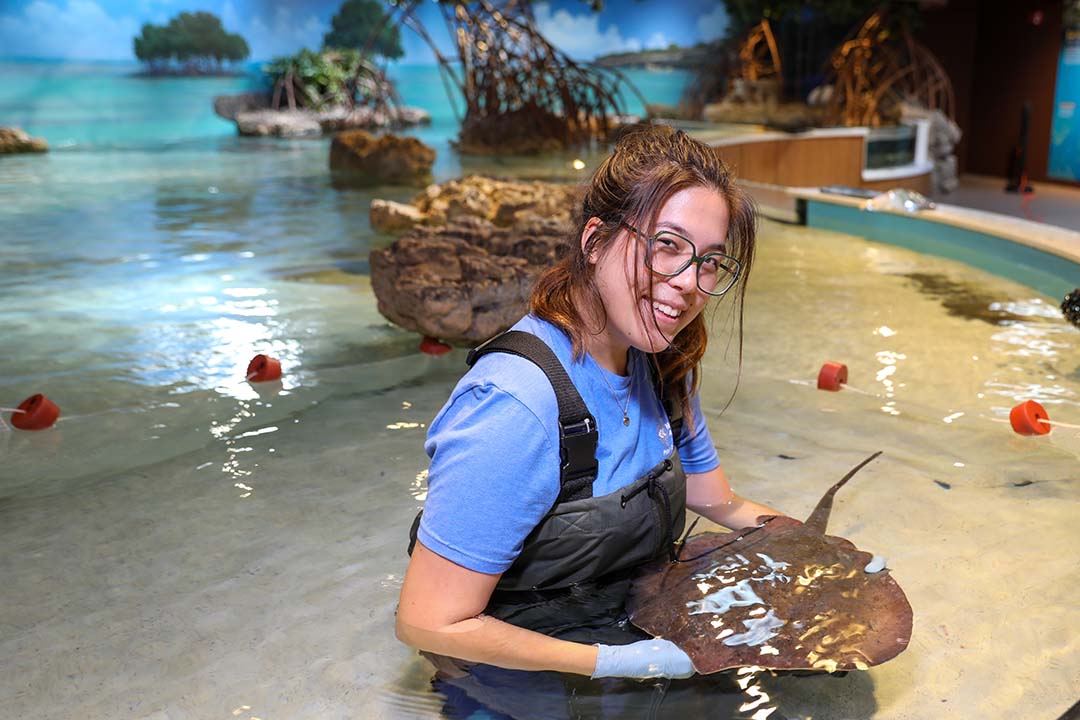
Rachel Jiang, Aquarist I
What animals do you work with at the Aquarium?
I am one of the aquarists in charge of the Shark and Ray Touch Tank! I work with a variety of elasmobranchs including bamboo sharks, epaulettes, leopard whiptails, our zebra bullhead, and several benthic ray species.
What does a typical day look like in your role?
Every day is different and I love that! Some days, I’m participating in medical exams, some days I am doing training sessions with our sharks and whiptails rays, and some days I’m in waders doing shark feeds with my interns. Never a dull moment here!
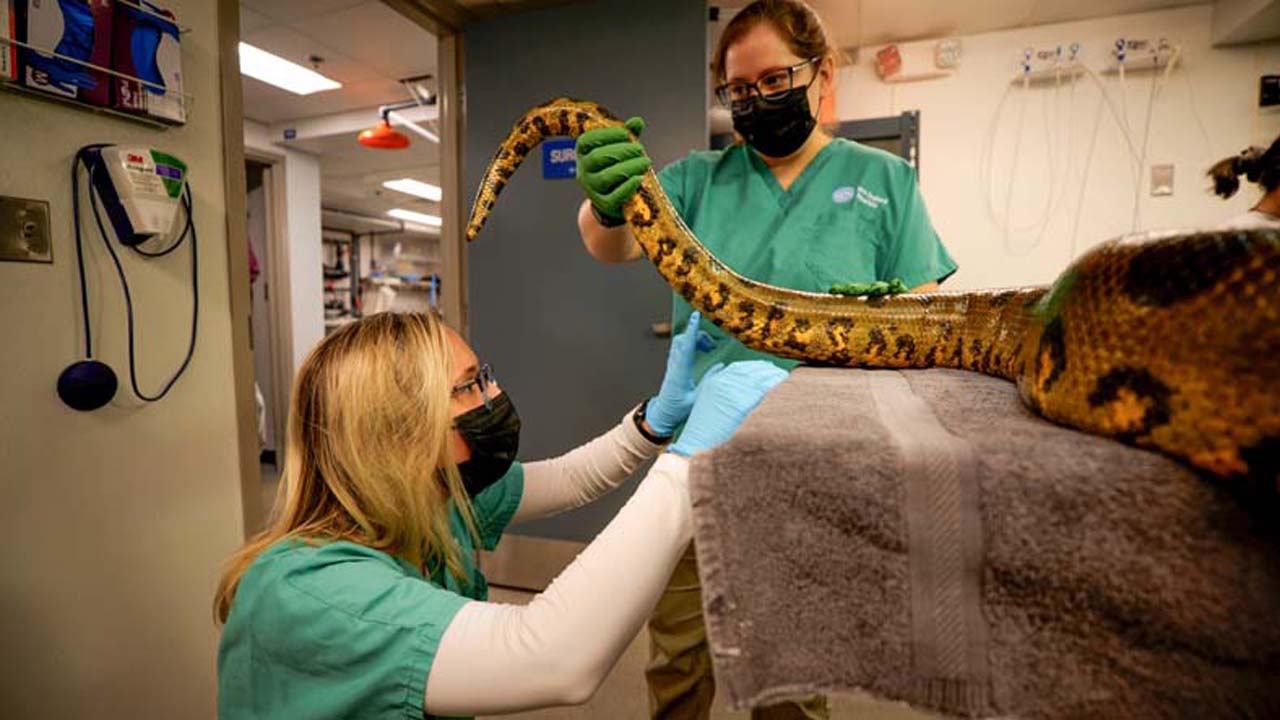
Alyssa Kaufold, Biologist II
What animals do you work with at the Aquarium?
All of them! I work with any animal that needs any sort of medical attention, whether it be an annual exam, blood work, radiographs, surgery or other medically necessary procedures. Working with all of the animals and their incredible keepers is one of my favorite parts of my job!
How did you end up in a career in animal care?
I always knew I wanted to work with animals! Since my first job as a veterinary kennel assistant at 14 years old, all of my jobs, internships, and volunteer positions have been focused around animal care. I also have a degree in animal behavior. It has been a lot of hard work but it absolutely paid off. I love my job and I am so grateful for all of the opportunities that led me here!

